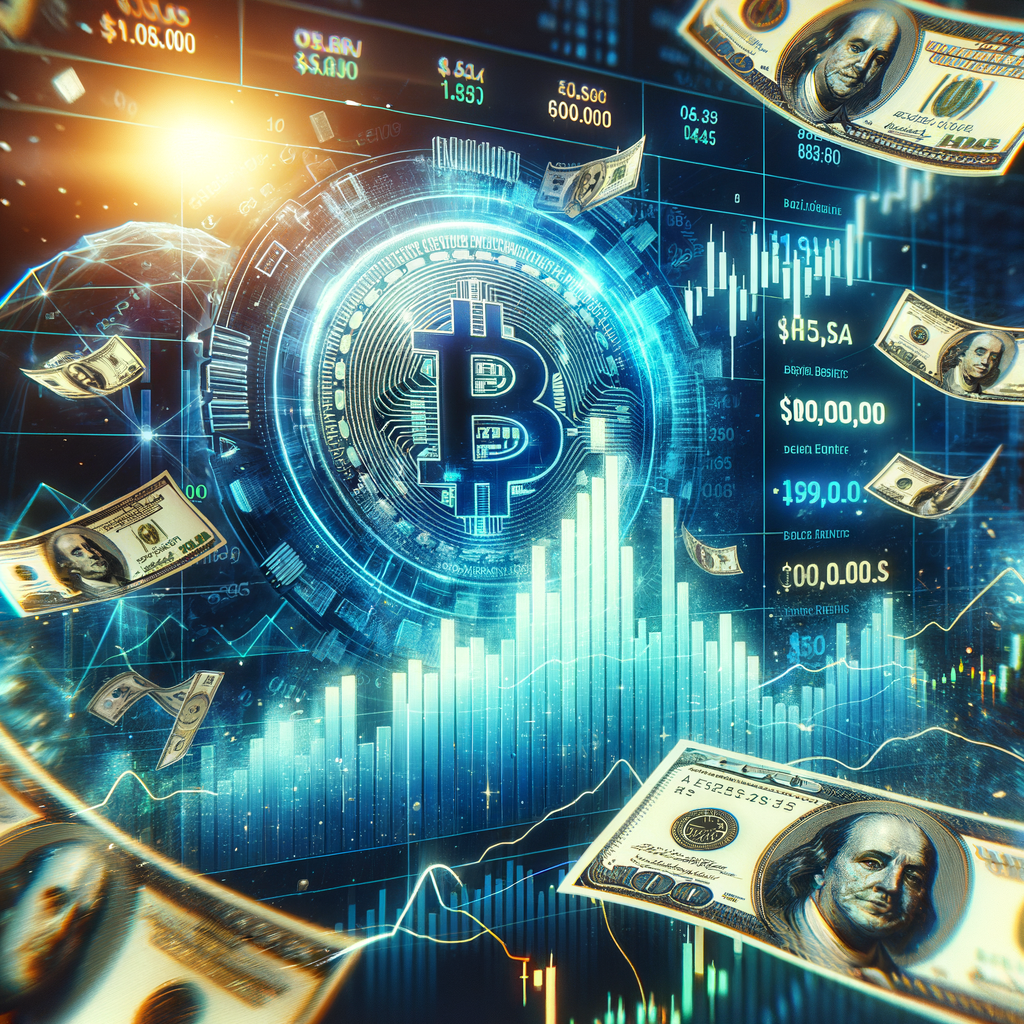Analyzing the Impact of Ripple’s $285M Buy-Back Plan on XRP Market Dynamics
In a bold move that has sent ripples through the cryptocurrency market, Ripple Labs, the company behind the XRP token, has announced a staggering $285 million buy-back plan. This strategic decision has sparked a wave of optimism among investors and analysts alike, as many speculate on the potential impact this could have on the price of XRP.
The buy-back plan, which is one of the largest in the digital currency space, represents a significant vote of confidence from Ripple in its native token. By reducing the supply of XRP available on the open market, the company aims to create a scarcity that could potentially drive up the token’s price. This tactic is not new to the financial world; it mirrors traditional stock buy-backs where companies purchase their own shares to boost the stock price and consolidate ownership.
The timing of this initiative is particularly noteworthy. The cryptocurrency market has been experiencing a period of volatility, with prices of many digital assets fluctuating wildly. Ripple’s decision to inject such a substantial sum into the market could be seen as a strategic effort to stabilize XRP’s price and possibly set the stage for a rally.
Moreover, the buy-back plan could be interpreted as a signal that Ripple is confident about the future of XRP, despite the ongoing legal battle with the U.S. Securities and Exchange Commission (SEC). The lawsuit, which alleges that Ripple conducted an unregistered securities offering, has cast a shadow over XRP’s future. However, Ripple’s aggressive buy-back strategy suggests that the company is optimistic about a favorable outcome.
Investors are closely watching the situation, as the buy-back could have a domino effect on market sentiment. If Ripple’s move is perceived as a success, it could encourage other cryptocurrency entities to follow suit, leading to a broader market uplift. This could be particularly beneficial for XRP, which has struggled to regain its former glory amid the legal uncertainties.
The buy-back also underscores Ripple’s commitment to the XRP Ledger and its associated technologies. By investing heavily in its own token, Ripple is reinforcing its dedication to building a robust ecosystem around XRP. This could attract new partnerships and use cases for XRP, further bolstering its value proposition and, by extension, its price.
However, it’s important to note that while the buy-back plan has the potential to trigger a price rally for XRP, the cryptocurrency market is notoriously unpredictable. External factors such as regulatory developments, macroeconomic trends, and shifts in investor sentiment can all influence the price of digital assets. Therefore, while the buy-back is a positive development, it is not a guaranteed catalyst for a price surge.
In conclusion, Ripple’s $285 million buy-back plan is a significant event that could have far-reaching implications for the XRP market. It demonstrates a strong belief in the token’s value and future prospects, which could instill confidence in investors and possibly lead to a price rally. As the cryptocurrency community watches with bated breath, the ultimate impact of this bold strategy will unfold in the weeks and months to come. Optimism is high, but as with all things in the crypto world, only time will tell if Ripple’s big bet will pay off.
Ripple’s $285M Buy-Back Strategy: Will It Catalyze a Bullish Trend for XRP?
Ripple’s $285M Buy-Back Strategy: Will It Catalyze a Bullish Trend for XRP?
In a bold move that has sent ripples through the cryptocurrency market, Ripple Labs, the company behind the digital asset XRP, has announced a staggering $285 million buy-back plan. This strategic decision has sparked a wave of optimism among investors and enthusiasts alike, as many speculate whether this could be the catalyst that triggers a price rally for XRP.
The buy-back program, which is not an uncommon practice in the traditional financial world, signifies Ripple’s confidence in its own digital currency. By reducing the number of XRP tokens in circulation, the company aims to increase the scarcity of the asset, potentially driving up its value. This move comes at a time when the cryptocurrency market is experiencing heightened volatility, with investors seeking signs of stability and growth potential in their assets.
Ripple’s decision to invest in its own currency also reflects a broader trend in the crypto industry, where companies are increasingly taking steps to assert control over their digital assets’ market dynamics. This proactive approach is seen as a way to manage market perception and bolster investor confidence, especially in the face of regulatory uncertainty and market fluctuations.
Moreover, the buy-back plan could be interpreted as a signal that Ripple is gearing up for future developments. The company has been at the forefront of facilitating cross-border payments and is continuously expanding its partnerships with financial institutions around the world. By consolidating its assets, Ripple may be positioning itself to take advantage of new opportunities and to further integrate XRP into global payment systems.
The optimism surrounding Ripple’s buy-back is not unfounded. Historically, asset buy-backs have often led to positive price movements, as they not only reduce supply but also demonstrate a firm’s belief in its own value proposition. For XRP, which has a loyal community of supporters and a growing list of use cases, the buy-back could serve as a strong endorsement that resonates with both current and potential investors.
Furthermore, the timing of the buy-back could be particularly advantageous. As the cryptocurrency market continues to mature, institutional investors are increasingly looking for assets with strong fundamentals and clear use cases. XRP, with its focus on payment solutions and its backing by a well-established company like Ripple, fits this bill. The buy-back could thus attract more institutional attention, potentially leading to increased demand and a subsequent price rally.
However, it’s important to note that while the buy-back plan is a positive development, the price of XRP, like all cryptocurrencies, is subject to a wide array of factors. Market sentiment, regulatory news, and technological advancements all play a role in determining the price trajectory of a digital asset. Therefore, while the buy-back is a significant step, it is just one piece of the puzzle.
In conclusion, Ripple’s $285 million buy-back plan has injected a dose of optimism into the XRP community and the broader cryptocurrency market. By signaling confidence in the future of XRP and reducing the token’s circulating supply, Ripple may indeed set the stage for a bullish trend. As the market digests this news and anticipates Ripple’s next moves, all eyes will be on XRP’s performance to see if the buy-back fulfills its promise of triggering a price rally.







